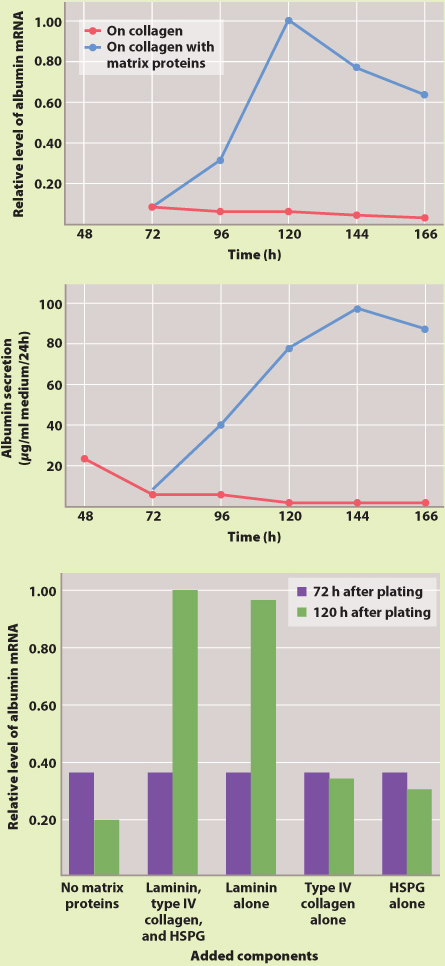HOW DO WE KNOW?
FIG. 10.22
Can extracellular matrix proteins influence gene expression?
BACKGROUND The adhesion of cells to the extracellular matrix is required for cell division, DNA synthesis, and proper cell shape. Research by Iranian-
HYPOTHESIS Caron hypothesized that a specific protein in the extracellular matrix is necessary for the expression of the protein albumin from hepatocytes grown in culture. Albumin is a major product of hepatocytes.
EXPERIMENT Caron cultured hepatocytes on a thin layer of type I collagen, which does not induce albumin synthesis. Next, she added a mixture of several different extracellular matrix proteins to the culture and looked for changes in albumin gene expression and protein secretion into the media. She then tested individual extracellular matrix proteins from the mixture to see which one was responsible for the increase in albumin gene expression.
RESULTS Caron found that when she cultured cells on collagen with a combination of three extracellular matrix proteins—

CONCLUSION Caron’s hypothesis was supported by the experiments. A specific extracellular matrix protein, laminin, influences the expression of albumin by hepatocytes.
FOLLOW-
SOURCES Lee, E. Y., et al. 1985. “Interaction of Mouse Mammary Epithelial Cells with Collagen Substrata: Regulation of Casein Gene Expression and Secretion.” Proceedings of the National Academy of Sciences, USA 82:1419–